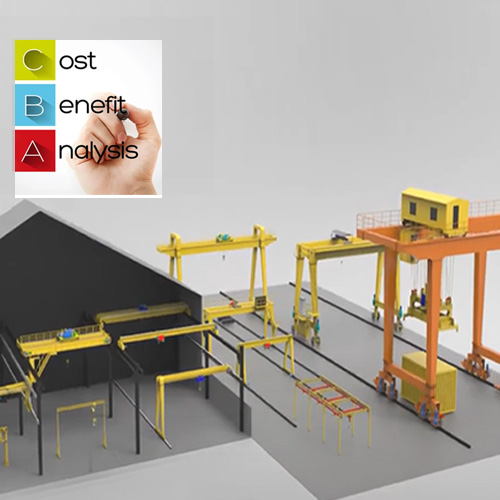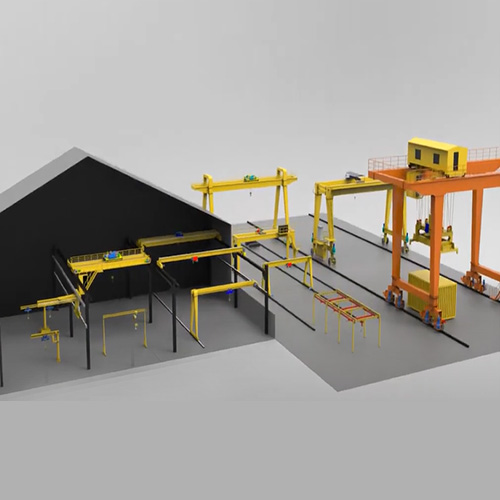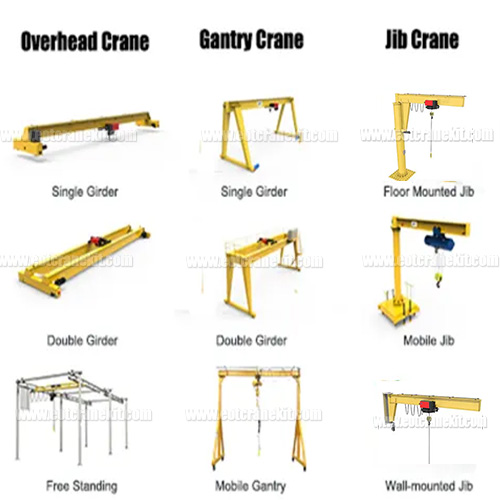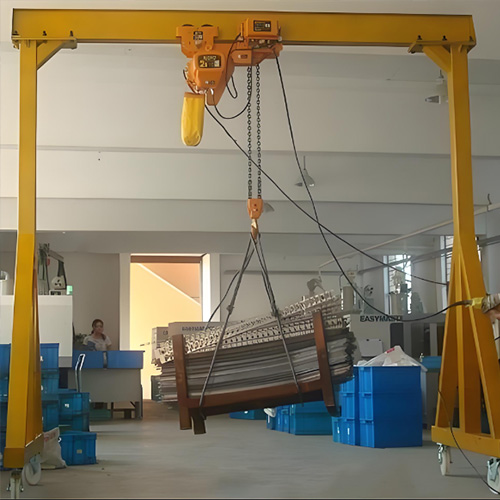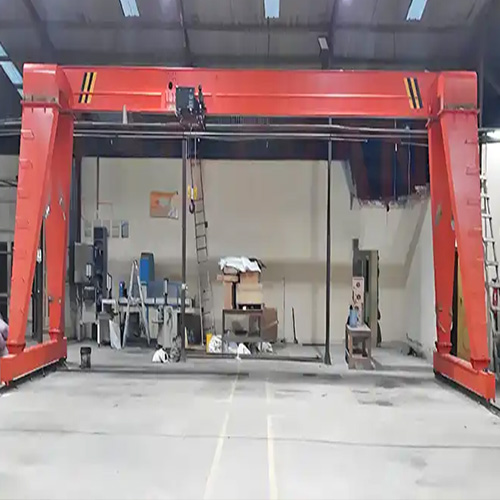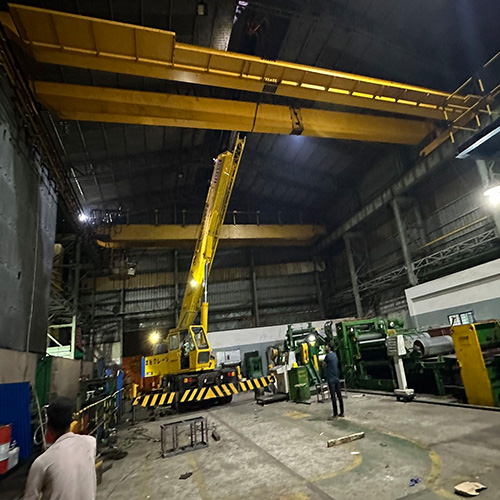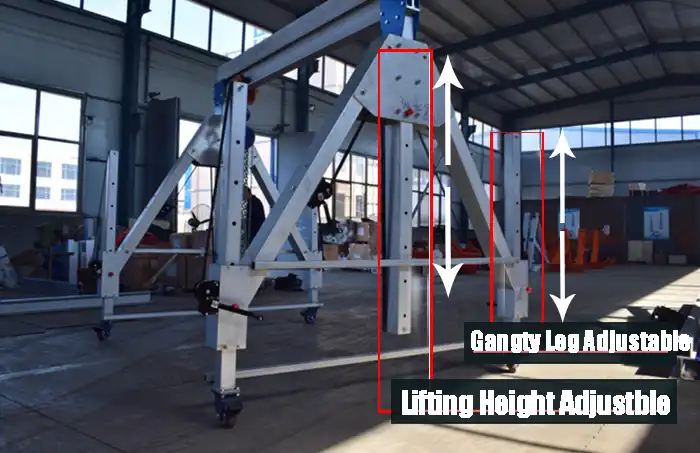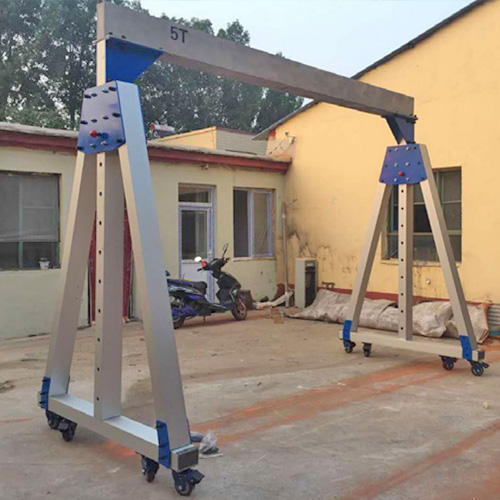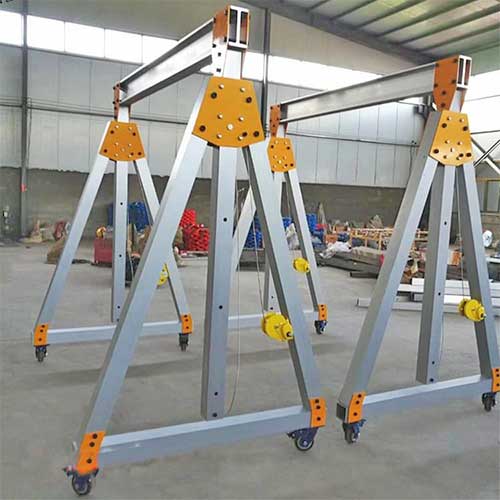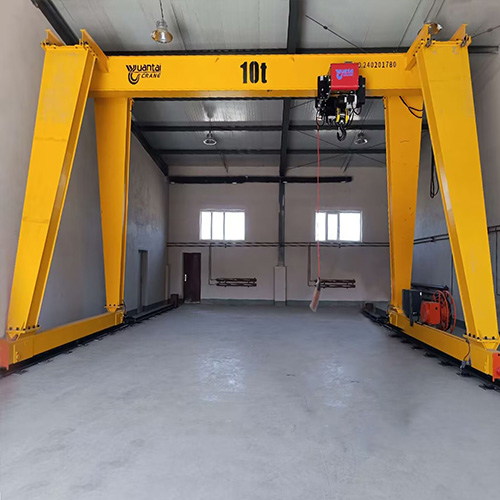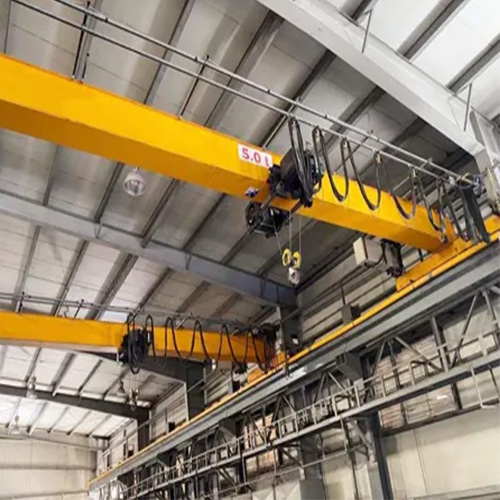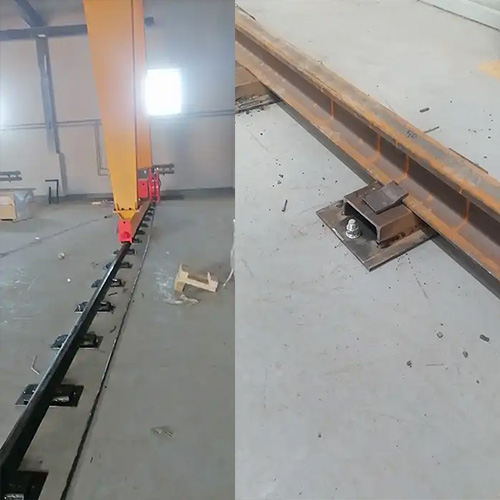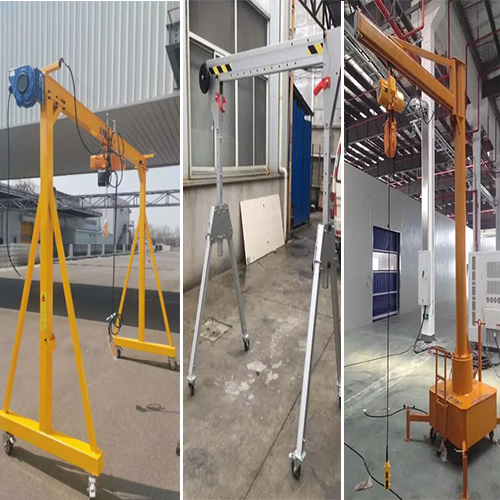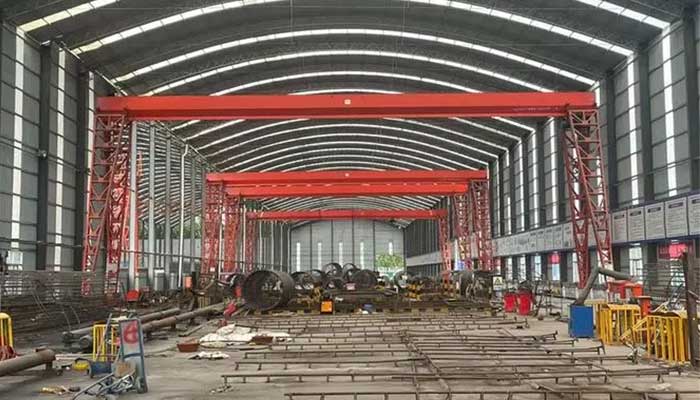
Warehouse Gantry Cranes Comprehensive Guide to Unlocking Efficiency
In the grand symphony of industry and logistics, the role of material handling cannot be overstated. Efficiently moving goods, materials, and heavy loads is the backbone of modern commerce. That's where warehouse gantry cranes step into the spotlight, offering a compelling solution to streamline operations and boost productivity.
If you're reading this, you likely understand the pivotal role that gantry cranes play in the world of material handling. These robust machines are the unsung heroes behind the scenes, quietly but efficiently lifting, transporting, and positioning hefty cargoes in warehouses, factories, and numerous industrial settings. But let's not keep their brilliance in the shadows any longer.
The Purpose of Warehouse Gantry Crane Guide
The purpose of this guide is simple yet profound: to empower you with knowledge about warehouse gantry cranes. Whether you're already a crane user seeking to deepen your understanding or a potential purchaser exploring the possibilities, you've come to the right place.
In the pages that follow, we'll embark on a journey through the world of warehouse gantry cranes. We'll explore their basics, types, features, benefits, and typical applications. We'll delve into the industrial sectors where these cranes are indispensable and demystify the factors that influence their cost and pricing. Furthermore, we'll address the top concerns of crane users, providing solutions to ensure safe, efficient, and environmentally responsible operations.
So, fasten your seatbelts (or should we say, crane hooks), as we embark on a voyage that will unlock the efficiency potential in your material handling operations. Let's dive right in.
Basics of Warehouse Gantry Cranes
A. What is a Warehouse Gantry Crane?
Imagine having a giant hand that can effortlessly lift, move, and position heavy objects in your warehouse, eliminating the need for strenuous manual labor and significantly boosting efficiency. That's precisely what a warehouse gantry crane is—a mechanical giant with a purpose.
A warehouse gantry crane is an industrial lifting machine designed to handle heavy materials and goods within warehouses, factories, and various industrial environments. What sets it apart is its horizontal beam (girder) structure that spans the width of the building, providing both support and mobility. This structural design allows the crane to move loads horizontally along a fixed track or rail system.
Gantry cranes come in various types, each tailored to specific lifting capacities and applications. Whether it's a single girder or a double girder, a box girder, or a specialized rail-mounted crane, these mechanical marvels are indispensable for efficiently transporting, positioning, and storing heavy items.
B. Why Choose a Gantry Crane for Your Warehouse?
Now, you might wonder, why should you choose a gantry crane for your warehouse when there are other lifting options available? The answer is simple—efficiency, versatility, and reliability.
Key Benefits of Choosing a Gantry Crane:
- 1. Lifting Power: Gantry cranes are designed to handle heavy loads, from several tons to over a hundred tons, depending on the type and configuration. This makes them perfect for warehouses with diverse material handling needs.
- 2. Versatility: Gantry cranes come in various types, including single girder, double girder, box girder, and more, each catering to different lifting capacities and requirements. Their adaptability makes them suitable for a wide range of applications.
- 3. Space Efficiency: Unlike some other crane types, gantry cranes do not require overhead support structures or permanent installations. This makes them ideal for warehouses where floor space is valuable and needs to be maximized.
- 4. Cost-Efficiency: Gantry cranes offer a cost-effective solution for lifting heavy loads without the need for complex infrastructure. They are often more budget-friendly compared to alternative options.
- 5. Safety: Safety is a paramount concern in industrial settings. Gantry cranes are equipped with various safety features, including limit switches, overload protection, emergency stop buttons, and audible alarms, to ensure safe operation.
C. Key Components and Terminology
To understand gantry cranes better, it's essential to familiarize yourself with key components and terminology:
- Girder: The horizontal beam that spans the width of the gantry structure.
- Hoisting Mechanism: The part responsible for lifting and lowering loads, often equipped with a hook, hoist, or lifting attachment.
- Traversing Mechanism: This mechanism allows the crane to move horizontally along the gantry structure.
- Control System: The interface used by operators to control the crane's movements.
- Power Source: Gantry cranes are typically powered by electricity, supplied through overhead cables or a busbar system.
- Safety Features: Various safety features, such as limit switches and overload protection, ensure secure crane operations.
D. Safety Considerations and Regulations
Safety is paramount when operating gantry cranes. To ensure safe operations, there are regulations and guidelines in place, which vary by region and industry. Compliance with these regulations is essential to protect workers, equipment, and materials.
Common safety considerations include:
- Regular inspections and maintenance to identify and address potential issues.
- Operator training and certification to ensure competence in crane operation.
- Safe working load limits and overload protection mechanisms.
- Adequate lighting and visibility in the workspace.
- Emergency stop buttons and audible alarms for immediate response in case of emergencies.
Understanding and adhering to safety regulations is non-negotiable when using gantry cranes, and it is a shared responsibility among crane operators, supervisors, and management.
Now that we've covered the basics, let's delve deeper into the fascinating world of gantry cranes, exploring the various types, their features, benefits, and typical applications. Stay with us as we unlock the potential of these mechanical marvels in your material handling operations.’
Types of Warehouse Gantry Cranes

Single Girder Warehouse Gantry Crane:
Single Girder Gantry Crane: This type of crane has a single horizontal beam (girder) that spans the width of the building. It is often used for lighter lifting tasks and is cost-effective for smaller warehouses. Typical capacity of gantry crane in warehouse: Up to 20 tons or more, depending on the specific design and requirements.
Features of warehouse cranes:
- Single girder design for lighter loads.
- Easy to install and maintain.
- Can be fitted with various lifting attachments.
- Suitable for indoor and outdoor use.
Benefit:
- Cost-effective solution for warehouses with moderate lifting needs.
- Versatile and efficient for material handling.
- Requires less space compared to double girder cranes.
Functions of single girder warehouse gantry crane:
- Loading and unloading of pallets and crates.
- Handling materials in manufacturing and assembly lines.
- Maintenance and repair tasks.
Industrial warehouses:
- Small to medium-sized warehouses.
- Manufacturing facilities.
- Assembly lines.
- Storage yards.

Double Girder Warehouse Gantry Crane:
Double Girder Gantry Crane: This type of crane has two horizontal beams (girders) for increased lifting capacity and stability. It's suitable for heavy-duty applications.
Typical capacity of gantry crane in warehouse: Ranging from 5 tons to over 100 tons, depending on the design and requirements.
Features of warehouse cranes:
- High lifting capacity.
- Greater stability and precision.
- Suitable for handling larger and heavier loads.
- Often equipped with advanced control systems.
Benefit:
- Ideal for heavy-duty warehouses and industrial applications.
- Enhanced stability and safety.
- Efficient handling of large and heavy materials.
Functions of double girder warehouse gantry crane:
- Handling steel coils, machinery, and heavy equipment.
- Loading and unloading bulk materials.
- Construction and infrastructure projects.
Industrial warehouses:
- Steel manufacturing plants.
- Automotive production facilities.
- Heavy machinery workshops.
- Ports and shipyards.

Box Girder Warehouse Gantry Crane:
Box Girder Gantry Crane: These cranes use a box-shaped girder design, offering improved strength and torsional resistance. Typical capacity of gantry crane in warehouse: Variable, depending on design and requirements, often used for medium to heavy loads.
Features of warehouse cranes:
- Enhanced structural strength.
- Suitable for precise and stable lifting.
- Can handle a variety of load shapes and sizes.
- Often used for high-precision applications.
Benefit:
- Excellent for applications where stability and precision are crucial.
- Versatile for various material handling tasks.
- Long service life due to the robust design.
Functions of box girder warehouse gantry crane:
- Handling sensitive or fragile materials.
- Lifting and positioning equipment in manufacturing.
- Precise material handling in industrial settings.
Industrial warehouses:
- High-precision manufacturing facilities.
- Aerospace and electronics production.
- Laboratories and clean rooms.

Semi-Gantry Crane: These cranes have one end supported by a gantry structure while the other end runs on wheels or rails along a wall or supporting structure. Typical capacity of gantry crane in warehouse: Variable, often used for medium-sized loads.
Features of warehouse cranes:
- Partially mobile design.
- Space-saving compared to full gantry cranes.
- Versatile for various applications.
- Often used where only one side of the crane needs mobility.
Benefit:
- Efficient use of space in warehouses.
- Mobile on one side, providing flexibility.
- Suitable for limited space environments.
Functions of semi-gantry crane in warehouse material handling:
- Handling materials along a wall or fixed structure.
- Moving loads within limited spaces.
- Efficient use of space in warehouses with spatial constraints.
Industrial warehouses:
- Workshops with restricted layouts.
- Storage facilities with narrow aisles.
- Manufacturing areas with space limitations.

Portable Gantry Crane: These are versatile cranes that can be easily moved within a facility or transported to different job sites. Typical capacity of gantry crane in warehouse: Moderate, suitable for various light to medium-duty lifting tasks.
Features of warehouse cranes:
- Mobility and portability.
- Quick and easy setup.
- Compact design for transportation.
- Suitable for temporary lifting needs.
Benefit:
- Provides flexibility for material handling in different locations.
- Cost-effective solution for occasional lifting tasks.
- Easy to transport and assemble.
Functions of portable gantry crane in warehouse material handling:
- Maintenance and repair work.
- Loading and unloading materials in temporary locations.
- Versatile lifting for various applications.
Industrial warehouses:
- Maintenance workshops.
- Construction sites.
- Temporary job sites.
Each type of gantry crane has its unique features and benefits, making it suitable for specific applications and industries. The choice of the right gantry crane depends on the lifting requirements, available space, and operational needs of the warehouse or facility.
Industrial Applications of Warehouse Gantry Cranes
Warehouse gantry cranes are not mere machines; they are the workhorses that power numerous industries, making the handling of heavy loads and materials an effortless endeavor. Let's embark on a journey through the diverse industrial landscapes where these cranes play a pivotal role.
A. Manufacturing
Role of Gantry Cranes: In manufacturing, precision and efficiency are paramount. Gantry cranes excel in this arena, facilitating the movement of heavy machinery, raw materials, and finished products within production facilities. Their adaptability makes them ideal for various manufacturing processes, from automotive assembly lines to steel and aluminum production.
Applications:
- Handling and positioning of heavy machinery.
- Loading and unloading of materials onto production lines.
- Transportation of large components in aerospace and defense manufacturing.
B. Warehousing and Logistics
Role of Gantry Cranes: Warehouses are bustling hubs of activity, and gantry cranes are the silent heroes that keep the supply chain moving smoothly. They are instrumental in stacking and retrieving goods from shelves, loading and unloading trucks, and optimizing storage space.
Applications:
- Stacking and retrieving pallets and crates.
- Loading and unloading of shipping containers.
- Efficient organization of inventory in distribution centers.
C. Ports and Shipping
Role of Gantry Cranes: In the world of global trade, speed and precision are essential. Ports rely on gantry cranes for the swift transfer of shipping containers between vessels, trucks, and storage yards. These cranes are the backbone of international logistics, ensuring the seamless flow of goods.
Applications:
- Unloading and loading of containers onto ships.
- Transferring containers between vessels and storage yards.
- Container stacking for efficient use of port space.
D. Construction
Role of Gantry Cranes: Construction sites are dynamic environments where heavy materials and equipment must be moved with precision. Gantry cranes provide the lifting power needed to transport construction materials and position them precisely where they are required.
Applications:
- Hoisting and placing steel beams and structural components.
- Lifting and transporting construction machinery.
- Handling heavy materials like concrete blocks and pre-fabricated elements.
E. Automotive
Role of Gantry Cranes: In the automotive industry, precision is paramount, and gantry cranes rise to the occasion. They are used for tasks ranging from engine assembly to the handling of vehicle bodies during production.
Applications:
- Positioning and assembling vehicle components.
- Lifting and moving vehicle bodies for painting and assembly.
- Efficient transportation of automotive parts within manufacturing plants.
F. Aerospace
Role of Gantry Cranes: The aerospace industry demands utmost precision and safety in the handling of aircraft components. Gantry cranes are a trusted choice for lifting and positioning large aircraft parts during assembly and maintenance.
Applications:
- Lifting and positioning of aircraft wings and fuselage.
- Engine maintenance and installation.
- Handling sensitive aerospace components with precision.
G. Steel and Heavy Machinery
Role of Gantry Cranes: In industries dealing with heavy machinery and materials like steel, gantry cranes are indispensable. They are used to move massive coils, steel plates, and machinery components efficiently.
Applications:
- Loading and unloading of steel coils.
- Transporting and positioning heavy machinery.
- Efficient handling of materials in steel manufacturing plants.
Warehouse gantry cranes are the versatile workhorses that transcend industry boundaries, making a profound impact on the efficiency and productivity of countless businesses. As we continue our exploration, we'll dive into the financial aspects of gantry cranes, addressing their costs and pricing considerations. Stay with us to uncover the financial side of these mechanical marvels.
Crane Cost and Price Considerations
Warehouse gantry cranes are not just an investment; they are a strategic asset that can significantly impact your business's efficiency and productivity. In this section, we'll delve into the financial aspects of gantry cranes, shedding light on the factors that influence their cost, pricing models, and maintenance considerations. We'll also explore the crucial concept of cost versus benefits to help you make informed decisions.
A. Factors Affecting Gantry Crane Cost
When it comes to gantry crane costs, several factors come into play:
- 1. Crane Type and Configuration: - The type of gantry crane you choose, whether it's a single girder, double girder, or a specialized design, greatly affects the cost. Additionally, factors like lifting capacity, span, and height also influence the crane's configuration and, consequently, its cost.
- 2. Customization and Special Features: - Tailoring the crane to your specific needs through customization can increase costs. Special features, such as advanced controls, automation, and specialized lifting attachments, also contribute to the overall price.
- 3. Location and Installation: - The cost of transporting and installing the crane at your site is a significant factor. Consideration must be given to factors like accessibility, site preparation, and infrastructure requirements.
- 4. Regulatory Compliance: - Meeting safety and regulatory standards often requires additional investments. Ensuring that your gantry crane complies with local and industry-specific regulations is essential for safe and legal operation.
B. Pricing Models and Options
Gantry crane pricing can vary based on several models and options:
- 1. Purchase vs. Lease: - You can either purchase a gantry crane outright or opt for leasing arrangements. Leasing provides flexibility but may entail higher long-term costs.
- 2. New vs. Used: - New gantry cranes offer the latest technology and warranties but come at a higher upfront cost. Used cranes are more budget-friendly but may have limited features or require additional maintenance.
- 3. Supplier and Brand: - Different suppliers and brands may offer varying price points for similar crane types and configurations. Consider factors like reputation, support, and service when choosing a supplier.
C. Maintenance and Operating Costs
Gantry cranes, like any machinery, come with ongoing maintenance and operating costs:
- 1. Maintenance: - Regular inspections, preventive maintenance, and occasional repairs are necessary to keep your gantry crane in optimal condition. Maintenance costs can vary depending on usage and the complexity of the crane.
- 2. Energy Costs: - The power source for your crane, whether electricity or diesel, will have associated energy costs. These costs can vary depending on the crane's usage and efficiency.
- 3. Operator Training: - Properly trained operators are essential for safe and efficient crane operation. Investing in operator training and certification is a recurring expense.
D. Cost vs. Benefits Analysis
The true value of a gantry crane lies in the benefits it provides to your business. Conducting a cost versus benefits analysis is crucial to make an informed decision:
- 1. Efficiency Gains: - Assess how the crane will improve material handling efficiency, reduce labor costs, and increase productivity.
- 2. Safety: - Consider the value of improved workplace safety, reduced accident risk, and compliance with safety regulations.
- 3. Long-term ROI: - Evaluate the long-term return on investment (ROI) by comparing the total cost of ownership, including maintenance and operating costs, with the benefits the crane brings to your business.
- 4. Business Growth: - Think about how the crane can support your business growth and scalability. Will it allow you to take on larger projects or handle more significant loads?
Balancing the costs of acquisition, operation, and maintenance with the benefits of increased efficiency and safety is essential to make a well-informed decision when investing in a gantry crane.
As we conclude our exploration of the financial aspects, we turn our attention to the concerns and challenges that crane users often encounter. Join us in the next section as we address these concerns and provide valuable insights for smooth and safe gantry crane operations.
Addressing User Concerns
Warehouse gantry cranes are powerful tools, but they also come with a set of concerns and challenges that need to be addressed for safe and efficient operations. In this section, we'll dive into these concerns and provide valuable insights on how to mitigate them.
A. Safety Precautions and Compliance
- Safety First: Safety should always be the top priority when working with gantry cranes. Here are some precautions and compliance measures to consider:
- Conduct regular safety inspections and maintenance checks.
- Ensure compliance with local and industry-specific safety regulations.
- Implement safety features like limit switches, overload protection, and emergency stop buttons.
- Provide adequate training to crane operators and other personnel working in proximity to the crane.
B. Maintenance and Servicing
- Preventive Maintenance: Proper maintenance is essential to keep your gantry crane in optimal working condition. Here's what you can do:
- Establish a maintenance schedule and adhere to it.
- Conduct regular inspections to identify and address potential issues.
- Keep a detailed record of maintenance activities and repairs.
- Work with qualified service providers for complex maintenance tasks.
C. Operator Training and Certification
- Operator Competence: Well-trained operators are key to safe and efficient crane operations. Ensure operator training and certification:
- Provide comprehensive training programs for crane operators.
- Ensure that operators are certified and meet industry standards.
- Offer refresher courses to keep operators up-to-date with the latest techniques and safety practices.
- Encourage a culture of continuous learning and improvement.
D. Upgrades and Modernization
- Stay Current: Technology evolves, and so should your crane equipment. Consider these strategies for upgrades and modernization:
- Regularly assess your crane's performance and features.
- Stay informed about technological advancements and upgrades available for your crane type.
- Invest in upgrades that improve efficiency, safety, and productivity.
- Modernize controls and automation systems for enhanced performance.
E. Environmental Impact and Sustainability
- Eco-Friendly Operations: In today's world, environmental impact is a growing concern. Here's how to address it:
- Opt for energy-efficient gantry crane models.
- Implement eco-friendly practices like recycling and waste reduction in crane operations.
- Consider alternative power sources, such as renewable energy options.
- Collaborate with suppliers who prioritize sustainability in their crane designs.
FAQ Section on Warehouse Gantry Cranes
In this FAQ section, we address common questions related to warehouse gantry cranes:
Q1: How do I determine the right gantry crane for my warehouse?
A1: Consider factors like the type of materials you'll be lifting, the weight of the loads, available space, and your budget. Consult with crane experts for personalized recommendations.
Q2: Are gantry cranes suitable for outdoor use?
A2: Yes, many gantry cranes are designed for outdoor use. However, the choice depends on factors like climate, exposure to the elements, and the type of loads you'll be handling.
Q3: What is the lifespan of a gantry crane?
A3: The lifespan of a gantry crane depends on factors like usage, maintenance, and environmental conditions. Properly maintained cranes can last for decades.
Q4: Can I retrofit an existing gantry crane with modern features?
A4: Yes, retrofitting is a viable option to modernize older gantry cranes. Consult with crane specialists to discuss upgrade possibilities.
Q5: How can I improve the energy efficiency of my gantry crane?
A5: Consider energy-efficient motors, LED lighting, and regenerative braking systems. Also, ensure that operators are trained to use the crane efficiently.
Conclusion
In closing, warehouse gantry cranes are not just mechanical marvels; they are indispensable tools that drive efficiency and safety in material handling operations across various industries. By addressing user concerns, prioritizing safety, and staying informed about advancements in crane technology, you can harness the full potential of these powerful machines.
We encourage you to make informed decisions when choosing the right gantry crane for your needs, taking into account factors like cost, safety, efficiency, and environmental impact. Whether you're a crane user or a potential purchaser, remember that gantry cranes are more than mere equipment—they are partners in your journey toward streamlined and efficient material handling operations.
Thank you for joining us on this exploration of warehouse gantry cranes. Should you have any further questions or require assistance, don't hesitate to reach out to us. Your success in material handling is our priority.

